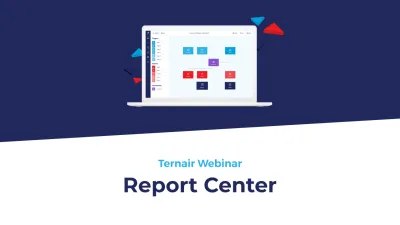The probability of whether someone will participate in an event can be predicted very well, says Stephanie Gillisse, Marketing Manager Data & Development at Vakmedianet. By analyzing all available marketing data in an AI model, key attributes become transparent and the right mail at the right time can make the difference.
Solutions & results
More relevant mailing by prediction model
Twice as many subscriptions
Higher customer satisfaction
E-mail marketing more relevant
Vakmedianet, as a b2b publisher, organizes several conferences and events every year. Filling them requires marketing efforts, in which marketing data play a central role. "All data that come in - such as click behavior, email interaction, previous participations - we process in Ternair Marketing Cloud. . With this, the central Marketing Data & Development team facilitates the rest of the organization with data-driven insights," Gillisse explains. A joint pilot began in March: "Ternair is good at unlocking and tying data together. Cmotions, in turn, is smart at using that data in AI models. For Vakmedianet, this pilot provided an opportunity to make email marketing more relevant."
"Ternair is good at unlocking and tying together data. Cmotions, in turn, is smart at using that data in AI models. For Vakmedianet, this pilot presented an opportunity to make its email marketing more relevant."
Responding to behavior that predicts participation - AI
Vakmedianet works with three different types of emails to recruit participants for events. The first are content emails with articles and content around the event theme. These raise awareness and interest around the topic. The second type of emails informs the target audience about the event, supplemented with content. The third type of mails, intended to convince, bring additional arguments why the event is really worthwhile now. Vakmedianet's challenge is to send the right e-mail to the right person at the right time. For this purpose, the pilot was set up, which consisted of three parts:
Analysis of all data. Cmotions first analyzed data from all touchpoints over the past ten months: visits to the various websites, downloads, email history, profile, purchase history of trade magazines, books and online services such as knowledge bases. Then this data becomes available to the model in near real time. Of the event attendance, Cmotions used the history of several years. With all this data, the AI model was trained and Cmotions determined which aspects have predictive value for signing up for an event. For example, someone who has already registered for an event once is more likely to register again. Visiting the website five times in one month is also a strong factor.
First campaign to learn. The insights were then applied to the emails surrounding two campaigns. The first campaign, a Nyenrode Summercourse, verified the insights gained and gave space to pick out any mistakes. A one-time score from the AI model was used on which the emails were sent manually. Someone who already visited the event page and gave signals to consider the event received the persuasion email. Someone who scored high in the model but did not yet seem to be considering the event got the second email about the event. And visitors who scored higher than average but were not in the top tier received the content mail. Choosing which mail was sent when was a matter of trial and error. There were also control groups, to purely measure the effect of the AI model and on the one hand and the content sent on the other.
Second campaign to prove. The second campaign was for the HR Current Affairs Day, aimed at HR managers on current legislative changes with practical tools. For this campaign, the AI model ran in Vakmedianet's own environment. The advantage of this was that the scoring of the data from the AI model could be done in real time, which also made application after the pilot phase easier. With actual data from the Ternair Marketing Cloud, the Cmotions model real-time now determined the type of email and when to send it. The final results of the sent emails were fed directly back into the AI model, making the model work better than the first campaign. With this, Vakmedianet saw very clearly what the model's contribution was.





